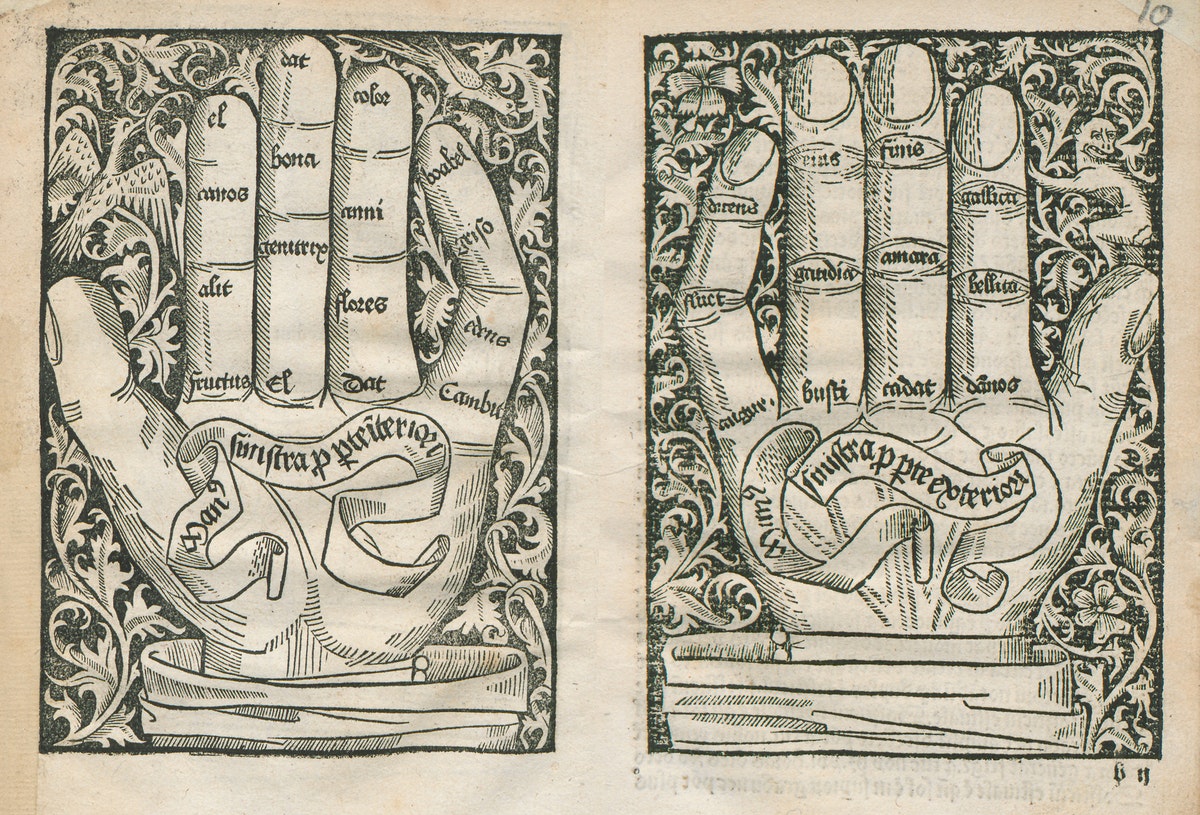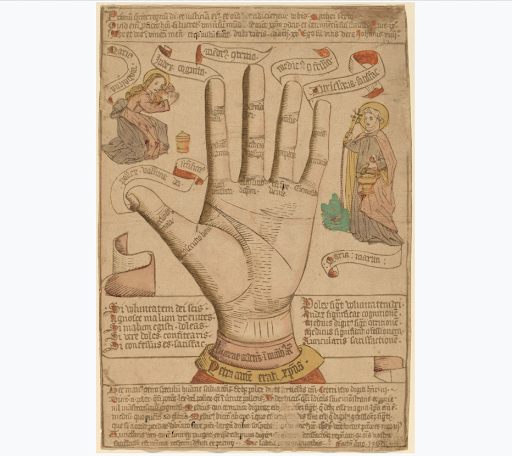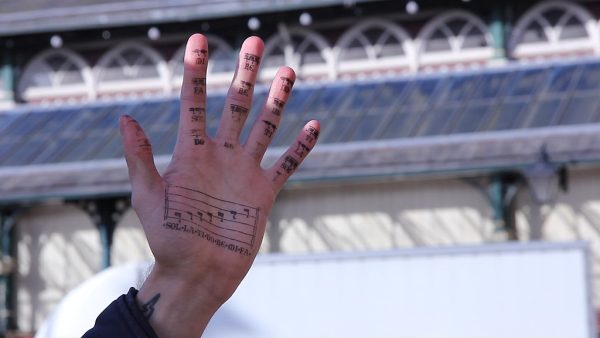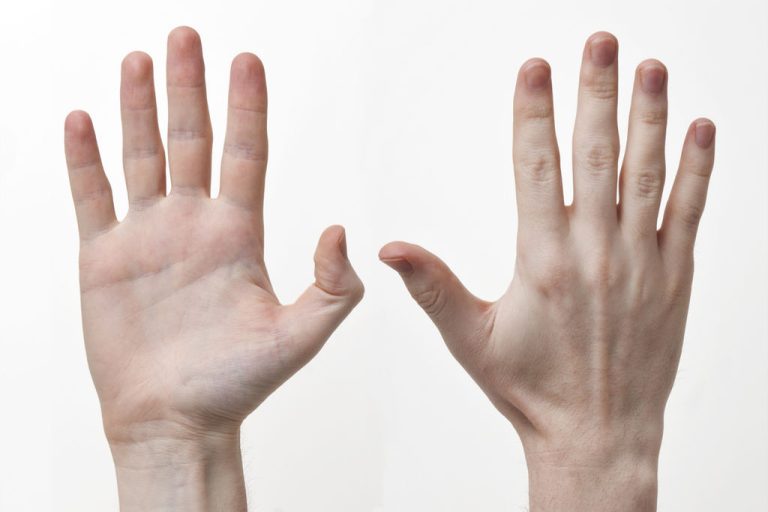While the human hand is the obvious tool of choice for an astounding number of physical tasks, it was once commonly used as a mnemonic device. Historical records demonstrate the utility of our five fingers for remembering, calculating, and sharing a wide range of knowledge.
How handy is the human hand?
The human hand is an extraordinary work of engineering, composed (including the wrist) of 27 bones controlled by 30 separate muscles. An estimated 40 percent of the hand’s capabilities emanate from the thumb, an opposable and prehensile digit that enables us to grasp.
Remote musculature in the forearm operates the fingers through long tendons, giving the hand incredible strength and mobility, the extremes of which can be observed in the one-finger handstand, and concert pianists.
Our earliest ancestors used the hand to tackle the tasks of physical survival, eventually creating and using primitive tools and communicating through gesturing and drawing.
As our intellect developed, we had reason to record, remember, and share useful bits of knowledge. At first our hands were simply used to manipulate other materials for this purpose, but at some point, around 12,000 years ago, they became a memory tool in and of themselves.
Historical use of hand mnemonics
Spiritual applications
Success
You are now signed up for our newsletter
Success
Check your email to complete sign up
In the Mogao Caves — a complex of excavated man-made caves in China — an ancient library was discovered that housed a manuscript which portrayed the ancient art of hand mnemonics.
Illustrated on the manuscript is a pair of hands with the palms facing the reader, with Chinese characters written on and around the fingers.
The tip of each digit contains characters both to identify the finger and one of the five elements. The five elements recognized in Buddhism — space, wind, fire, water, and earth — are each represented by the same digit on both hands. Above each finger, the ten virtues — Charity, Compassion, Composure, Generosity, Patience, Protection of Life, Rationality, Reconciliation, Self-discipline and Wisdom — are all recorded.

Around the same time period, a monk named Bede, in the Anglo-Saxon lands of Northumbria, mapped out a precise method for calculating when Easter would arrive each year.
According to his treatise, The Reckoning of Time, the hands could be used to map out the planetary rhythms. The 14 joints and five finger nails on one hand make up 19 “landmarks,” representing the 19 years it takes for the moon to come back to the same phase on the same calendar date, or the metonic cycle.
Using both hands – counting the joints only – Bede established 28 landmarks, the number of years in a solar cycle.
Bede expressed that the finer details were better conveyed by mouth, so the idea was not illustrated further; but the system, called computus digitorium, was adapted and widely used for centuries as a handy method for determining the date of Christianity’s most important holiday.

A 1466 woodcut from Germany called The Hand as the Mirror of Salvation, uses the hand in a similar fashion to that found in the Mogao Caves, with the five fingers representing God’s will, examination, repentance, confession, and fulfillment.
Yet another illustration of such mnemonics showed the hands painted with Christian figures like apostles and saints on the four fingers, with Jesus and Mary taking the thumbs.
Other practical uses
The practice was also applicable to music. Benedictine monk Guido d’Arezzo, an Italian music theorist of the early 1000s, founded a system that was instrumental in developing the modern staff notation. Although he never connected the notes to the hand specifically, his charts were readily applied to the five digits, with the joints marking pitches in a scale.

Guido’s work inspired the further development of hand-based mnemonics by European linguists; including John Holt, who developed a technique for remembering Latin declensions, and Thomas Marner, who founded a hand mnemonic for spoken German. Chinese scholars had already developed syllable charts for the hand at this point.
Meanwhile, Bede’s work inspired further mnemonics for time. In 1582, French polymat Jehan Tabourot published a book on practical astronomy with 11 pages of hand illustrations, one of which determined long or short months by using a particular configuration of the hand.
Best digital device ever
In more recent times, mnemonic practices started to utilize other methods of memory-preservation; the most prominent being Memory Palace. This technique applies visual cues to familiar places — also known as loci — to help memorize things.
Like hand mnemonics, one applies association of things to be learned with locations, but memory palaces are idiosyncratic — useful only for the individual. Hand mnemonics can be used by anyone as a shared tool for learning, teaching or communication.
Today, we are practically ruled by our modern digital devices. While they provide and transfer copious bits of data; they also distract us, shape our thinking, and erode our quality of life. The traditional digital device, however, does not deceive us.
While most of the old systems have fallen into disuse, there are some that prevail. Many people still use the knuckles to determine the long and short months, U.S. citizens in certain areas use hand-based maps to determine geography, and the “right-hand rule” is commonly used in physics and mathematics.
As psychologist Barbara Tversky wrote, “When thought overwhelms the mind, the mind puts it into the world.” As long as we have this convenient tool that we carry with us at all times, why not make the most of it? Try using one of these ancient methods to commit something meaningful to memory.
READ MORE:

















